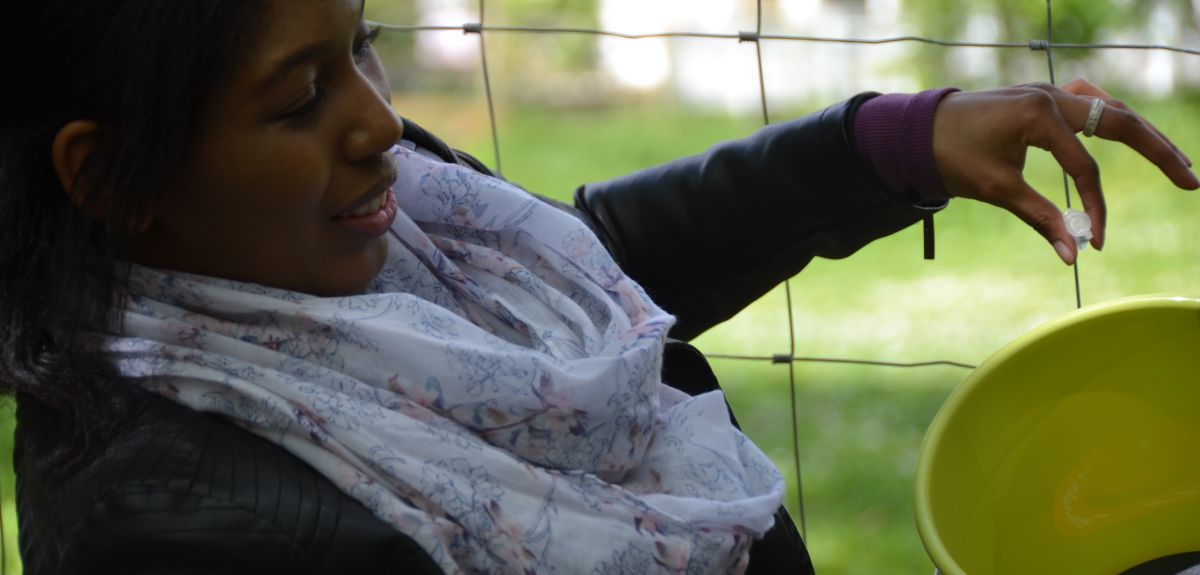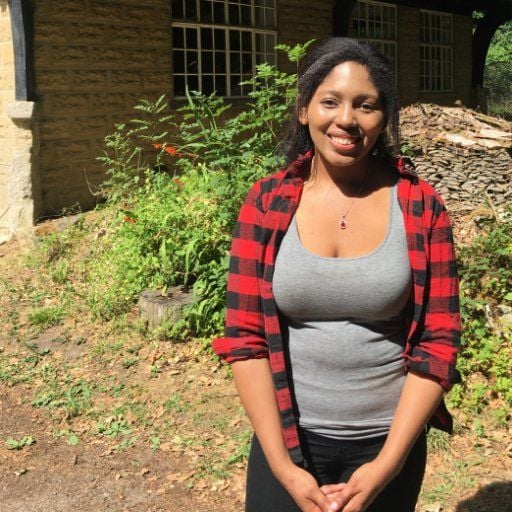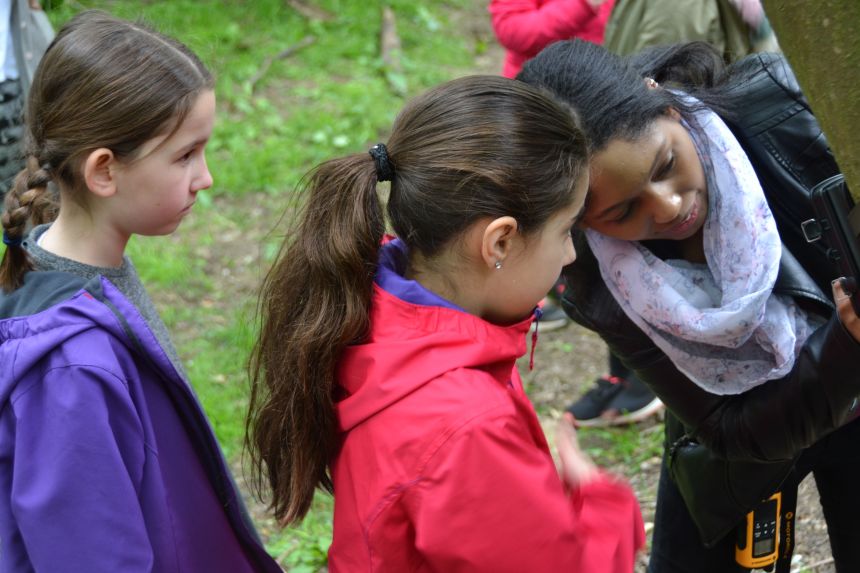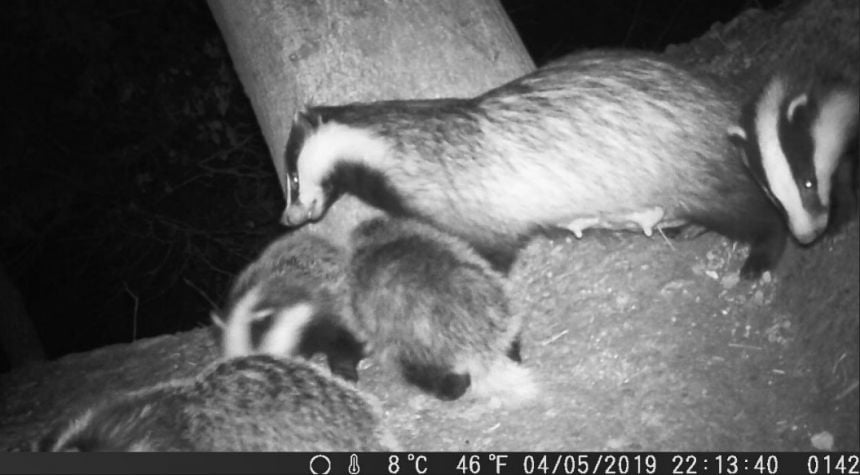
Tanesha Allen, an African American Zoologist and behavioural ecologist at the Wildlife Research Conservation Unit (WildCRU), Oxford University, discusses her research studying the behaviours of European badgers, transatlantic culture shock and how and her experience of being a black female scientist compares to others in her field.
Research Spotlight: Amazing people at Oxford who you should know about
Black female scientists have historically borne the brunt of both racial and gender biases in their fields, and in a white male dominated industry like the sciences, their achievements can at times go unsung.
These adverse circumstances make their victories all the more significant, and their contributions to the scientific community invaluable.
In celebration of Black History Month we are shining a light on some of the brilliant black minds of Oxford whose research is helping to improve the world today.
'I had never seen any prominent women of colour in zoology until I joined twitter'
Tanesha Allen, an African American Zoologist and behavioural ecologist at the Wildlife Research Conservation Unit (WildCRU), Oxford University, discusses her research studying the behaviours of European badgers, transatlantic culture shock and how and her experience as a black female scientist compares to others in her field.
Earlier this year Tanesha was awarded ‘Highly Commended’ at the Vice-Chancellor’s Public Engagement with Research Awards for her community outreach work, encouraging girls aged 11-14 to choose a career in science.
What is your research area?
I study olfactory communications in European badgers. That basically means understanding how these animals use scent to advertise themselves for mating opportunities. An animal’s scent can tell you a lot of information about them, from their age through to the group that they are from.
I started my DPhil at Oxford University in October 2016, and am I’m now in my fourth year of working with WildCRU and am part of the Wytham Woods Badger Project, which has been running since 1987.
 Tanesha Allen, is a Zoologist and behavioural ecologist at the Wildlife Research Conservation Unit (WildCRU), Oxford University. Image credit: WildCRU
Tanesha Allen, is a Zoologist and behavioural ecologist at the Wildlife Research Conservation Unit (WildCRU), Oxford University. Image credit: WildCRUWytham Woods has the highest population of badgers in the world – 250 total, including 200 adults and 50 cubs. Each season we spend two weeks live tracking the badgers, using a unique tattoo which they have on their inner thigh. We use this to gather information on their weight, body condition, teeth, wounds and scars etc., to see how they change over time. It helps us to understand their movements, and how these animals respond to the challenges that they face, such as changing habitats, and how we can best protect them. Understanding their movements and behaviours can also help us to prevent the spread of tuberculosis (TB).
What is a badger fact that people would be surprised to know?
Badgers are naturally promiscuous, and mate with everyone. Females have something called superfetation, which allows them to mate with, and have their embryos fertilised by multiple males.
What is a typical day in the life like for you?
There is no such thing as an average day for me. My daily routine changes from season to season. During one season I could be spending all day in the woods collecting samples, at another time I’ll be releasing badgers back to their sets, and at others, I spend all day in my office reading journal articles. Another big part of my work is public engagement, so I spend a lot of time in schools with children running workshops to try and engage them with wildlife and conservation.
You were recently awarded “Highly Commended” at the Vice-Chancellor’s Public Engagement with Research Awards for your citizen science project with local schools. Firstly congratulations! Secondly, what interests you most about working with young people?
I love working with students, and how open they are to learning.
Usually in outreach with adults they often already have preconceived ideas about what science is and what they believe should be done, or shouldn’t be done. But with students they don’t have any preconceived notions. Just an eager thirst for knowledge.
 Tanesha works with the Abingdon Science Partnership and Science Oxford on a project encouraging girls aged between the ages of 11 and 14 to choose careers in science.
Tanesha works with the Abingdon Science Partnership and Science Oxford on a project encouraging girls aged between the ages of 11 and 14 to choose careers in science.Can you tell us about your project?
I work with the Abingdon Science Partnership and Science Oxford on a project encouraging girls aged between the ages of 11 and 14 to choose careers in STEM, especially physics. I volunteered initially, and over time have got more and more involved in science outreach and communications.
Our work is funded by the Royal Society Partnership Grant, and we work with local secondary and primary schools, teaching students how to use camera traps to monitor wildlife, analyse footage and also animal behaviour. The project has been running for just over a year.
I’m also teaching them how badgers react to scent from different species and have taken them out badger tracking. We have found nine badges and six cubs so far.
 Image credit: Tanesha Allen
Image credit: Tanesha AllenTanesha's research focuses on factory communications in European badgers and understanding how they use scent to advertise themselves for mating opportunities.
Did anyone ever try to discourage you from pursuing a career in science?
The opposite actually, I never encountered any push-back, I was always an academic person who got good grades at school, so people were very encouraging to me.
I did encounter some challenges during my Undergraduate Degree at Washington State University. I think that was when I became more aware of social issues such as, racism and sexism and how they affect me. I went to a very diverse elementary school, and then moved to the suburbs, which were not as diverse, but I was definitely sheltered from some harsh realities like that.
Can you elaborate?
I became more aware of what it meant to be a black woman in society when I went to university.
When I started my degree I became more aware of what microaggressions were, and how people from marginalised groups are treated compared to more privileged groups.
I was one of two black women on an animal sciences course, surrounded by a lot of white students and professors, and I became aware of a number of microaggressions. There was always an assumption I was lazy or unmotivated. It was very hard and it really got to me.
Mostly because I had not encountered anything like that before in my life.
How did this experience affect you, and how did you learn to overcome it?
It was hard, and is something that I still wrestle with now. But I have learned to focus on what I bring to the table. I know my worth and the value of my research. I won’t allow someone to make me feel that way again – but it is not easy.
As a black female zoologist what does Black History Month mean to you?
In my opinion, Black History Month is an important time for everyone - regardless of their race - because, black history is a part of history. Period. Both in the US and UK, black people have had a huge impact on the development of these countries and certain social movements have influenced the trajectory of those countries, in ways that influence society at large, not just one group of people.
Black History Month is an opportunity to highlight the achievements that the black community has made in spite of the obstacles put in our way, while highlighting that more needs to be done – especially somewhere like Oxford.
On a personal level I enjoy hearing other people’s stories and connecting with others in the field. I had never seen any prominent women of colour in zoology until I joined twitter last year. But being active on social media has allowed me to connect with other women of colour in the field who share my passion for zoology, and to celebrate them more.
What is it like to work side by side a conservation icon like Professor David Macdonald?
It is amazing working with David. The year before I applied to Oxford University, Cecil the lion died and it was major news everywhere, including America, where I am from.
What gets you out of bed in the morning?
I enjoy mastering a puzzle, and putting the pieces together of figuring out how animals communicate with each other. What affects their interactions with each other, their environment and with us? I want to know how we can use their behaviour to help improve the environment.
Have you always had an interest in conservation and wildlife?
I was always interested in science as a child.
I was born and raised in Tacoma, Washington, USA, and remember going outside a lot, and spending time in my apartment complex. I loved playing with bugs and watching my neighbours dogs and birds. But, the only jobs I knew of that involved working with animals were being a vet or a zookeeper. I didn’t have much knowledge of other animal related jobs.
Animal behaviour in general has always fascinated me, particularly how similarities to humans and how they choose mates. A lot goes into that decision – who you have already mated with, who you are related to. Humans do the same thing.
How did you find moving from the US to the UK for your graduate studies and PhD work, was it hard to adjust to a new environment?
I’ve been in the UK since 2012, and the transition from my education in America, to here, has been interesting. The main thing for me was adjusting to cultural differences. Americans are more outgoing and forthright. I find it can be hard to know if you have offended a Brit, because they don’t often tell you directly.
Was your experience as a black women in science different in the UK to your American university?
There were good and bad elements to both experiences, and I have experienced discrimination in both countries in different ways.
What do you think needs to change to eliminate these behaviours?
We tend to talk a lot about sexism in STEM, but there is not a lot of talk about how different women from different types of backgrounds encounter different challenges in STEM. So there is not a lot of focus on intersectionality. I think one good step would be addressing unconscious bias. As scientists we are trained to be objective and logical. Often there are times we think we don’t have unconscious biases with social issues, or towards certain groups of people, but we do. I think having our unconscious biases addressed, and unlearning our own behaviours would be a good way to make things easier for the next generation of women and women of colour in
STEM.
 Image Credit: WildCRU
Image Credit: WildCRUTanesha and her team in Wytham Woods
During my second and third year at Oxford I was the postgraduate representative for the Oxford University Campaign for Racial Awareness and Equality, which allowed me to push forward ideas around conducting racial awareness workshops on a college and department level. Postgraduate students are more connected to their departments than their colleges so it is important to consider both areas.
Is there anything that you would change about the University?
There is a lot I would change about how marginalised, and under-represented groups are treated in Oxford.
There are definitely more initiatives in place that are helping to improve diversity, and encourage more people of ethnic minorities to apply, which is excellent. However, the next step is making sure people from these groups are included more within research grounds, colleges and wider projects.
It is one thing for institutions to be diverse, but if those people don’t feel like they are being properly valued, included and respected, these initiatives fall short.
What’s next for you when you finish at Oxford?
I am finishing my thesis and will complete my PhD next summer. I am not sure what comes next, but I hope to continue my science outreach work with children, and would love to stay in the UK.
What do you like most about being part of Oxford University?
To me the history behind it is incredible. Whenever you walk around, the tiniest things are connected to a prominent person who made a historic contribution to the University centuries ago.
Compared to the States the oldest buildings and things would be from at most the 1700s. Whenever I walk around central Oxford, and look up and see the beautiful Bodleian Libraries and Sheldonian Theatre around me it can be me it is surreal. Especially when I see the tourists walking around, taking pictures and looking in awe just to be here, it reminds me how lucky I am, and I think to myself ‘I actually live here, that’s cool!’
How do badgers respond to scents from other species?